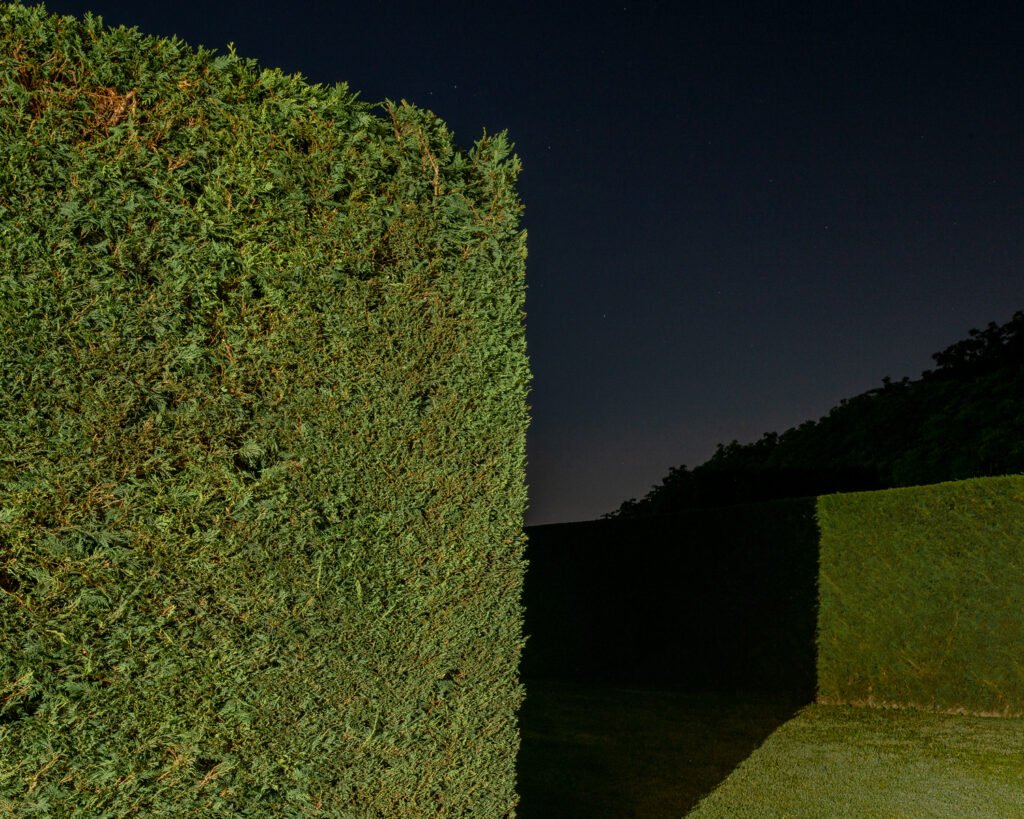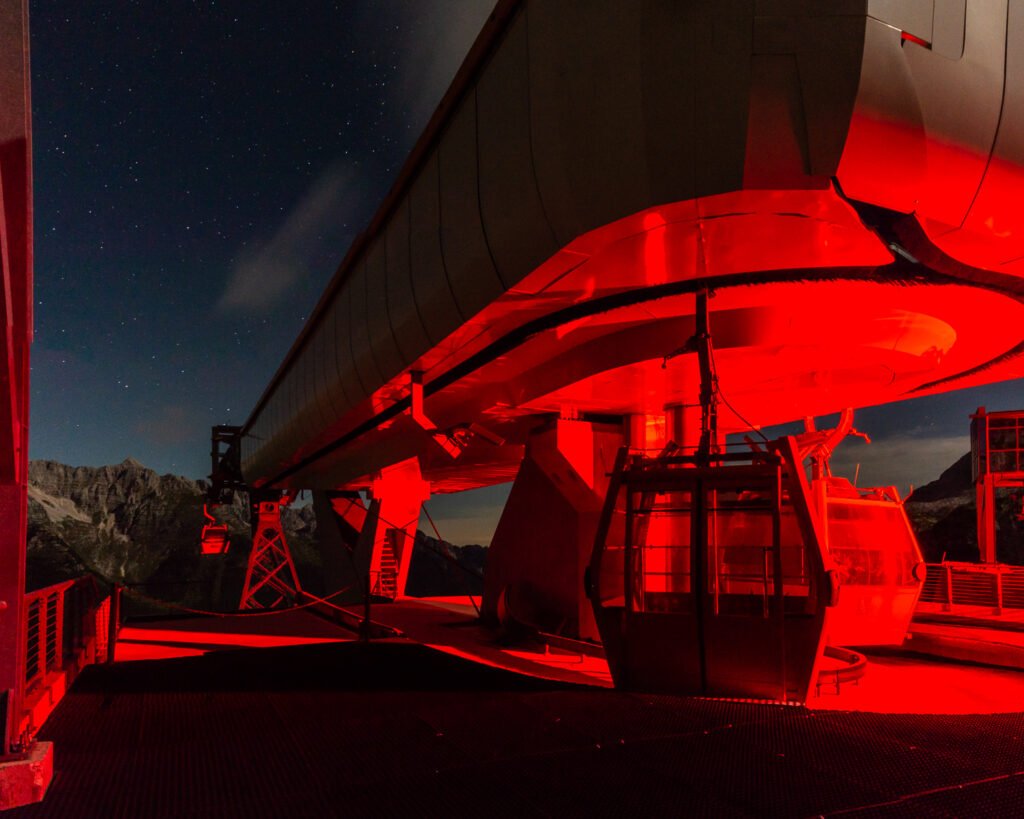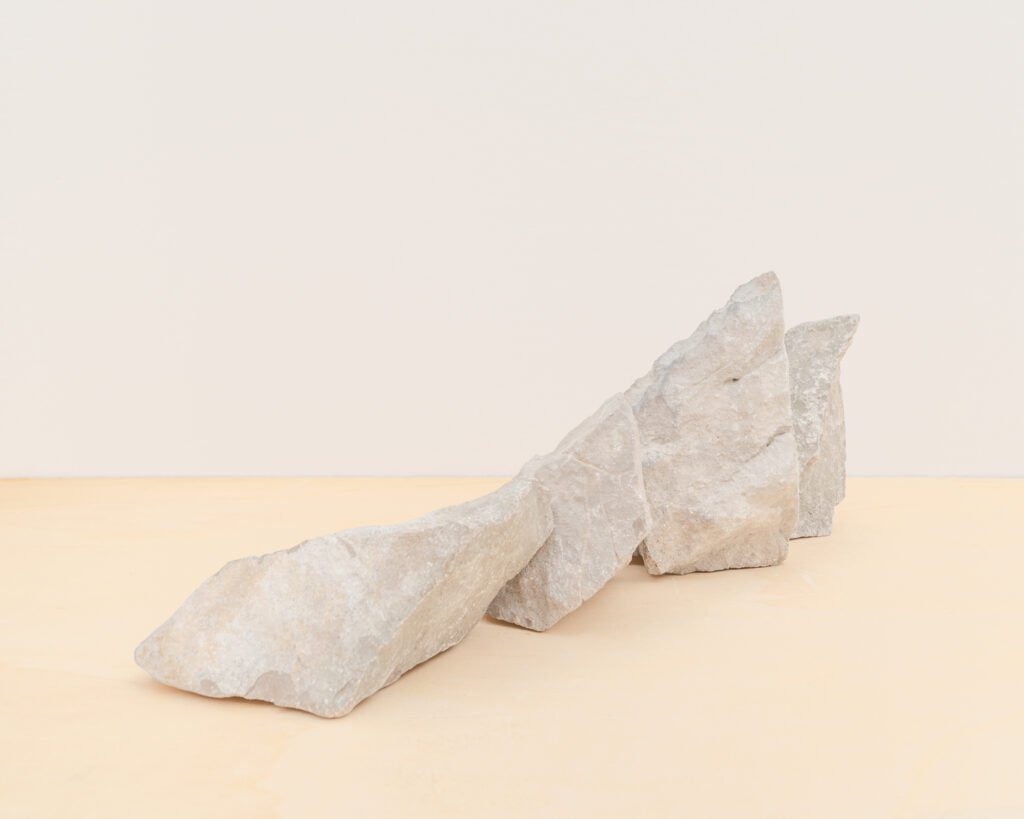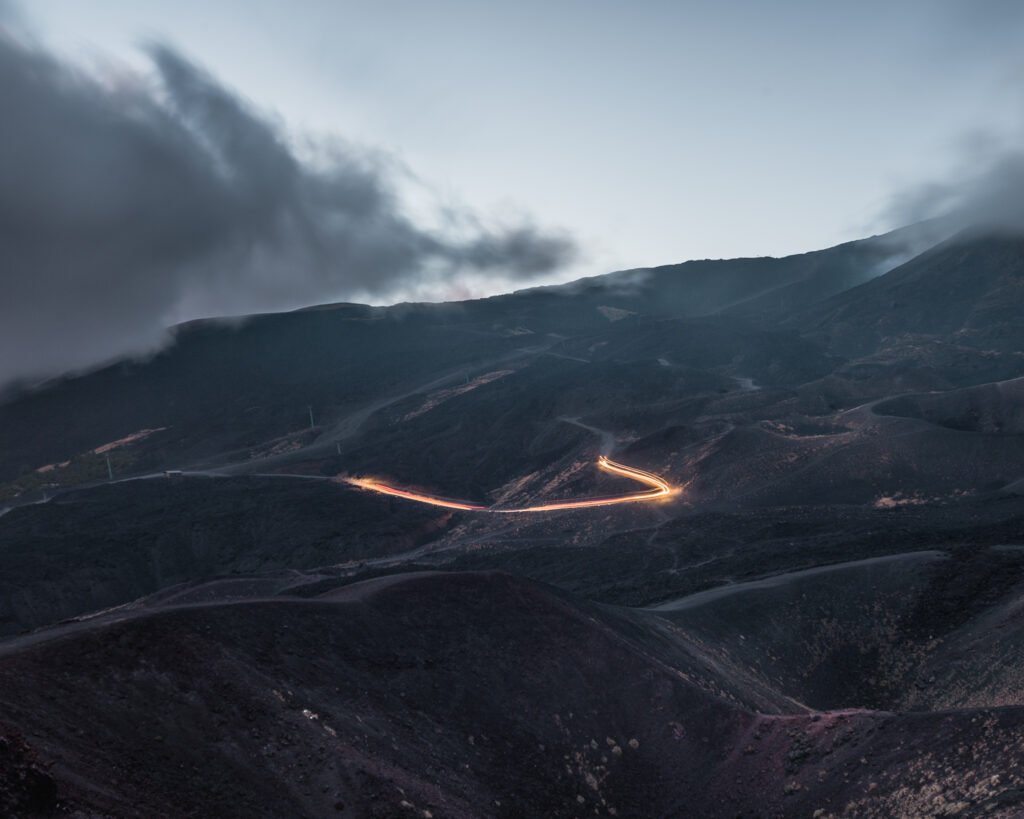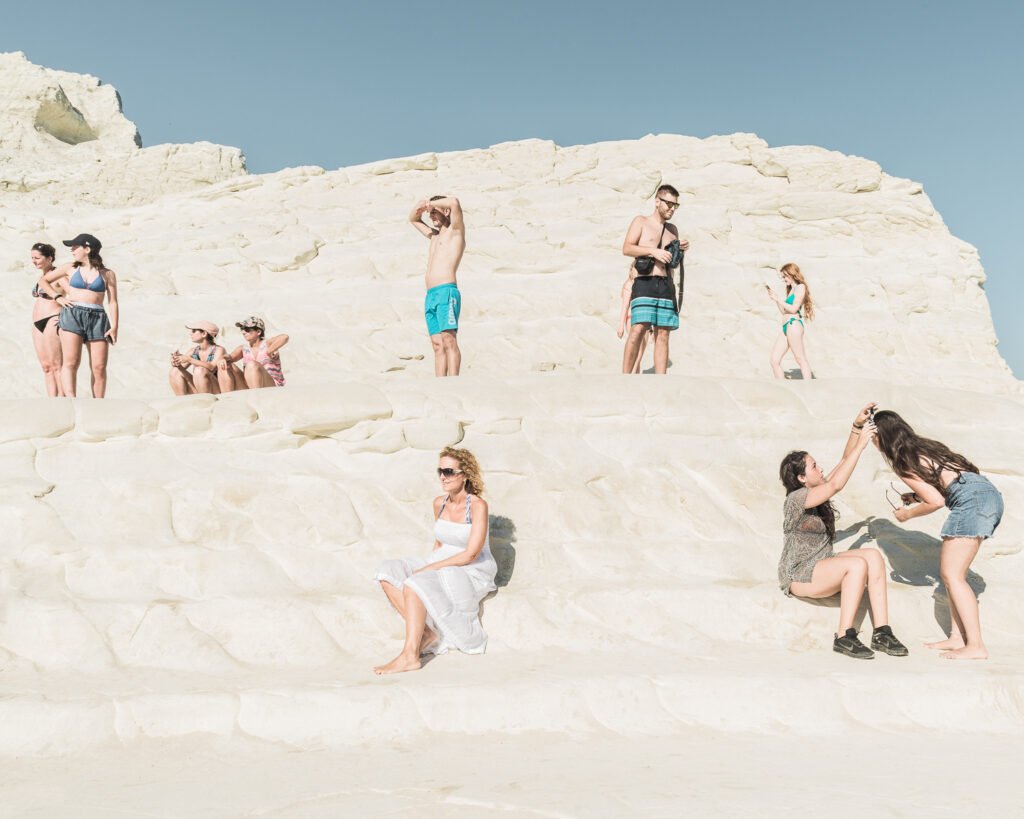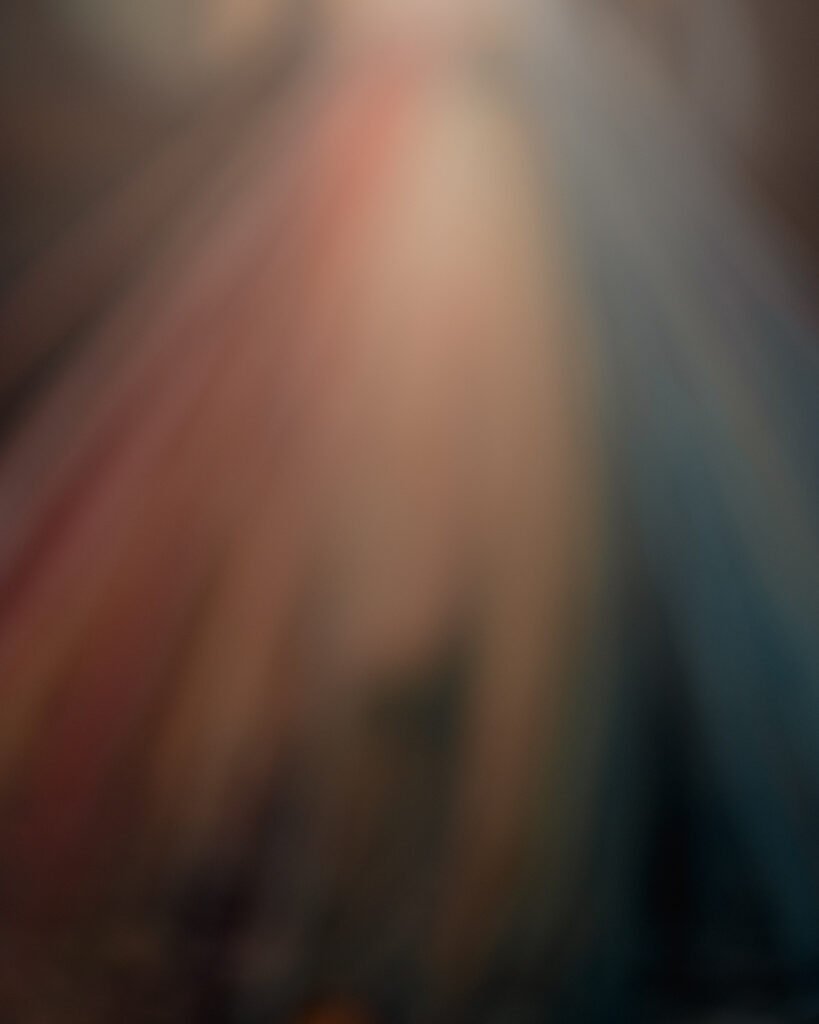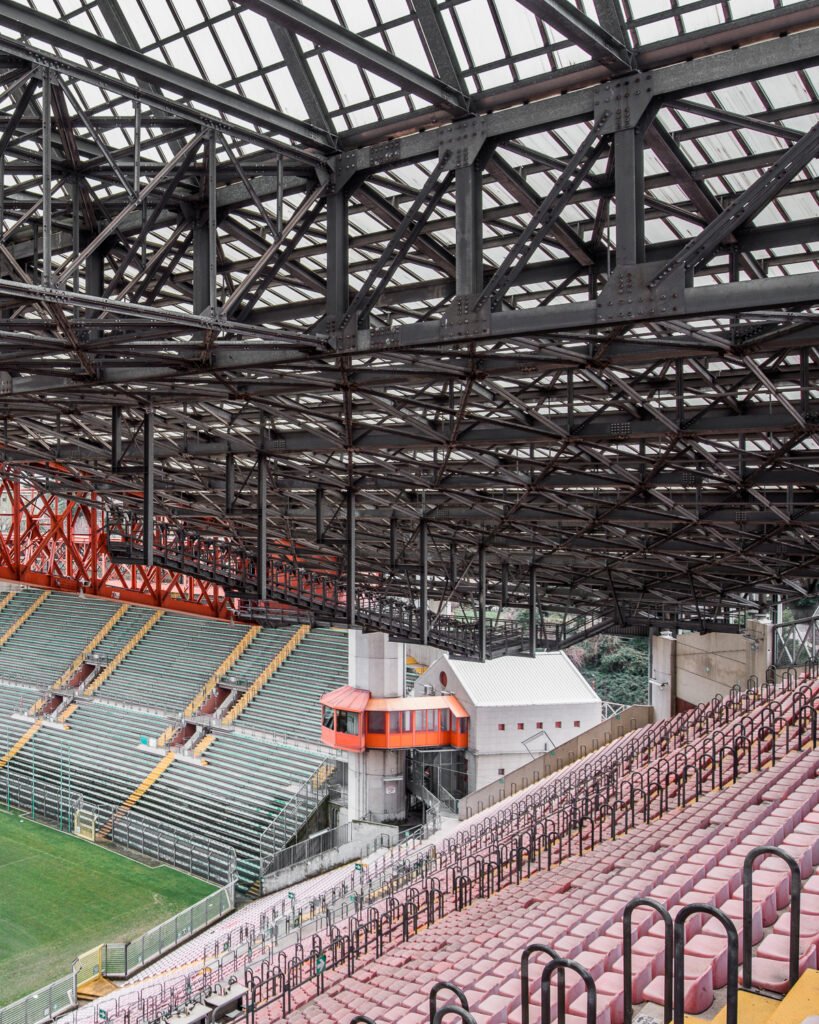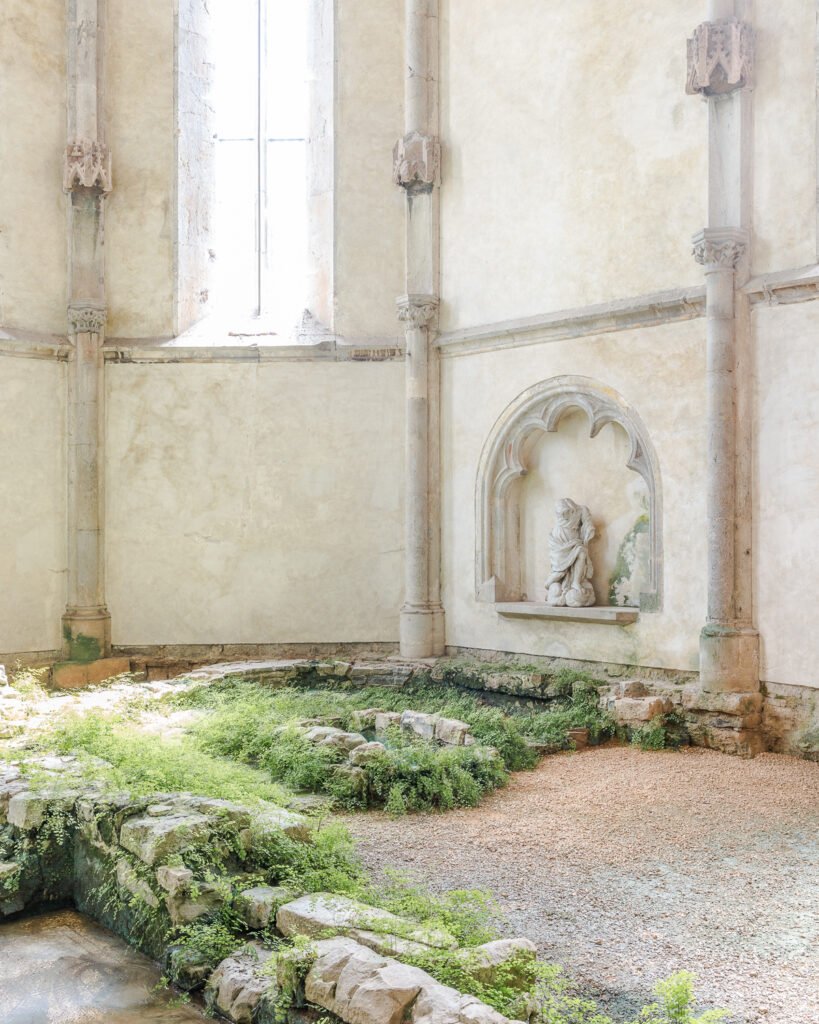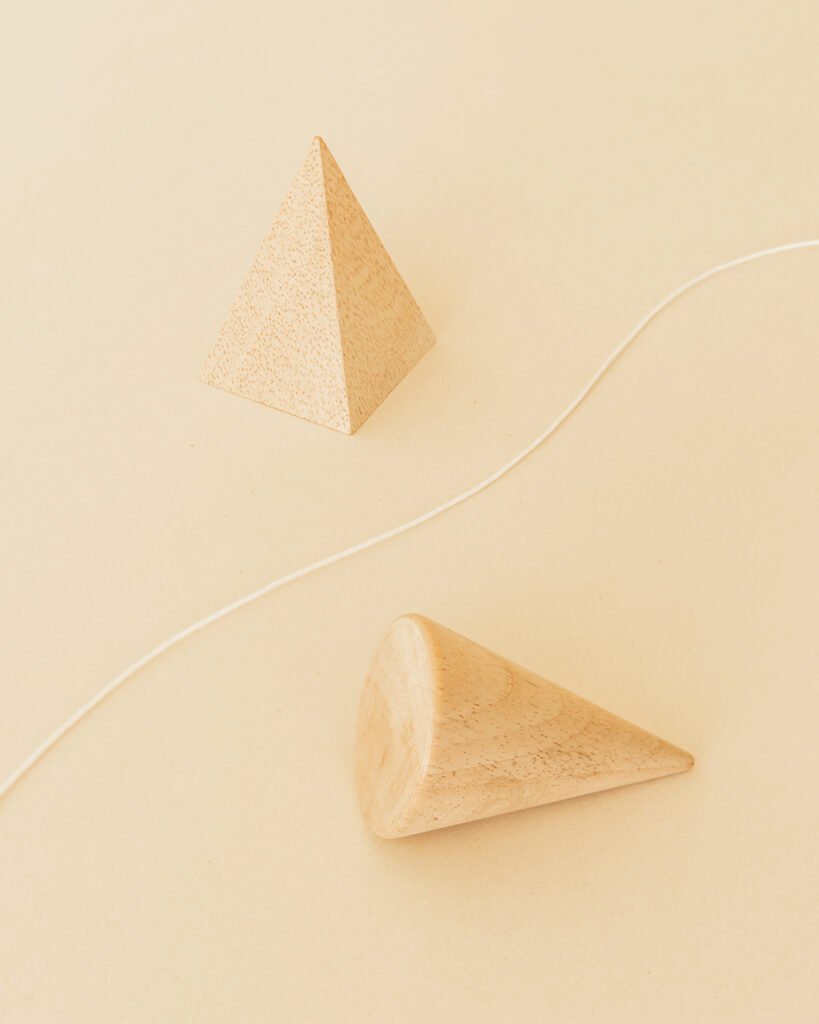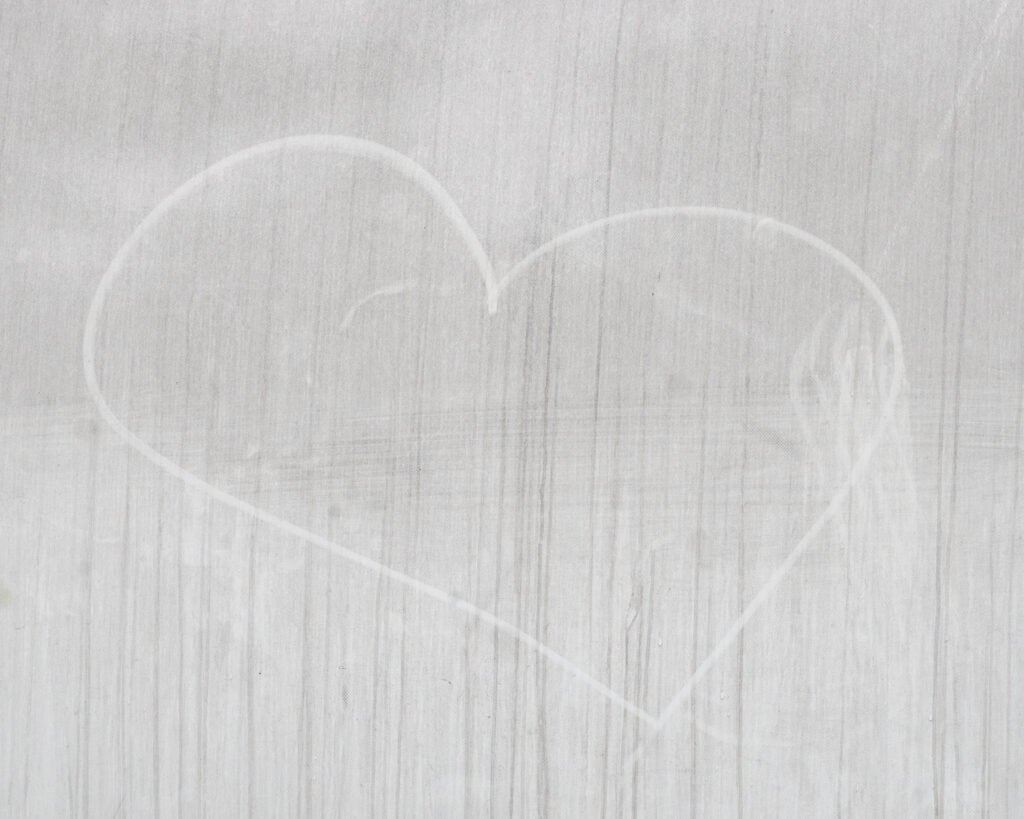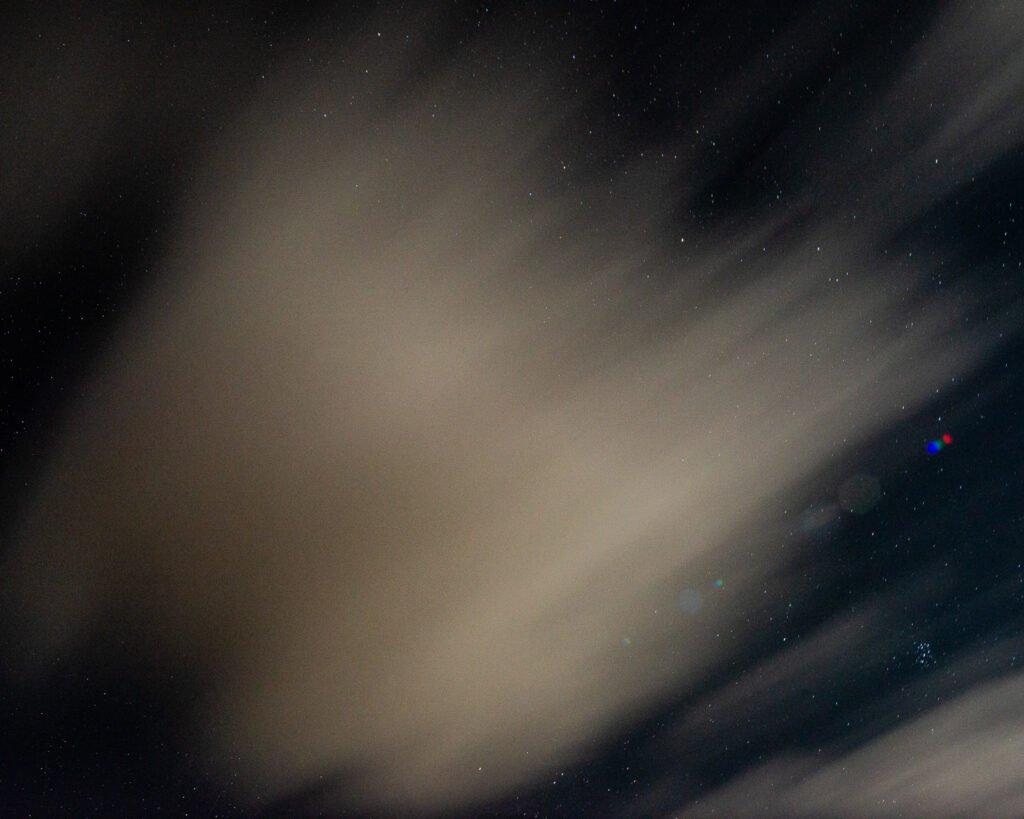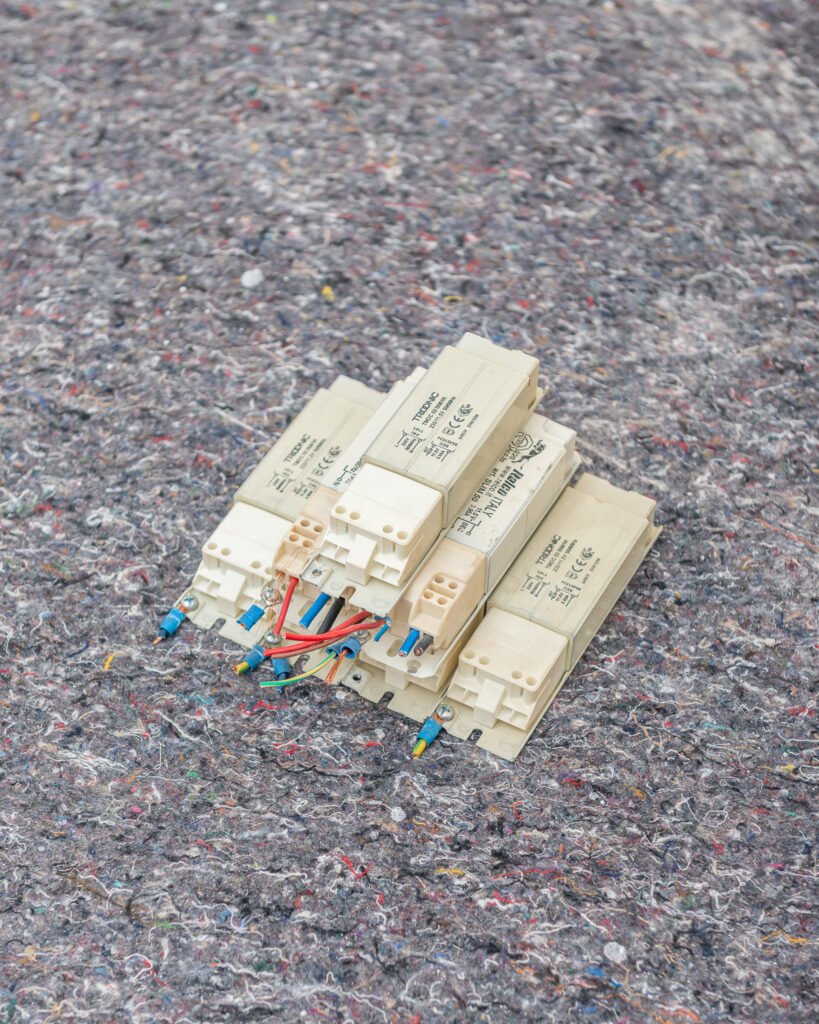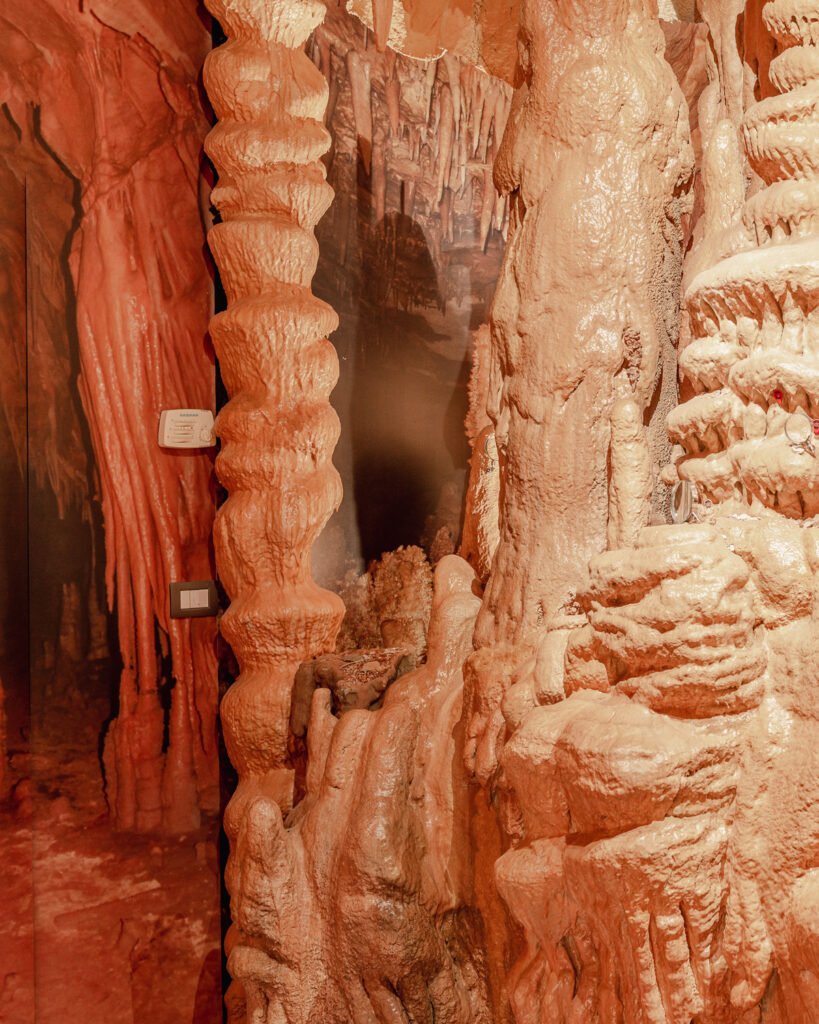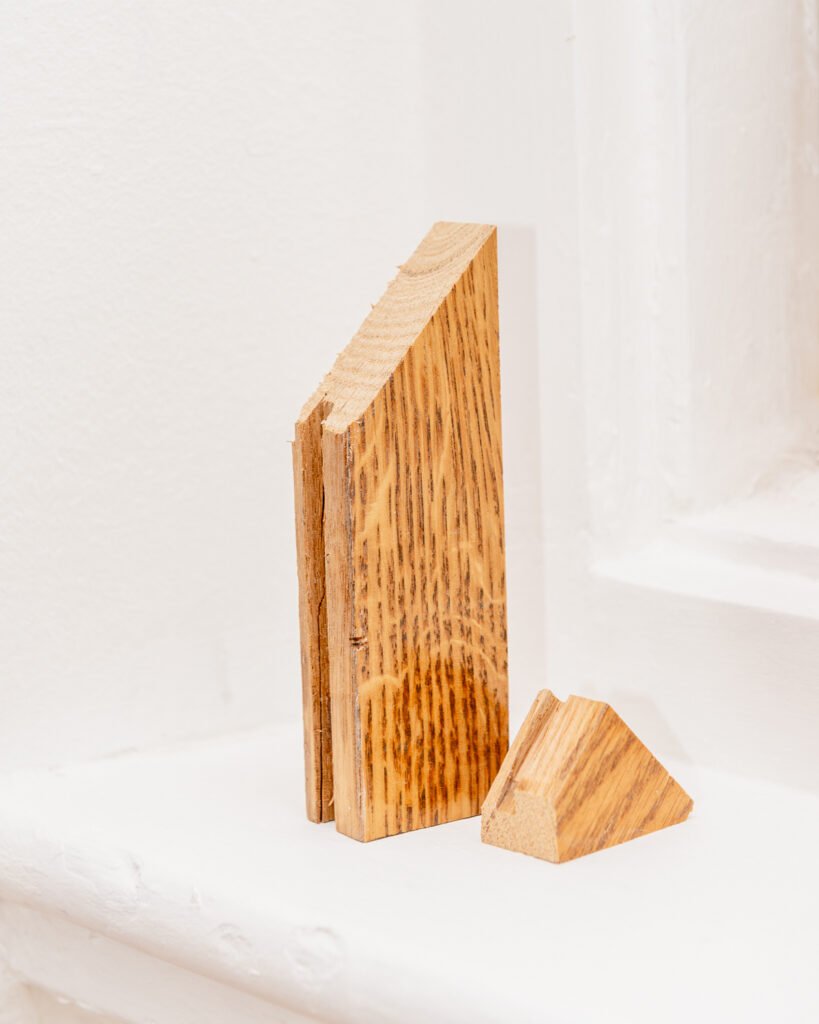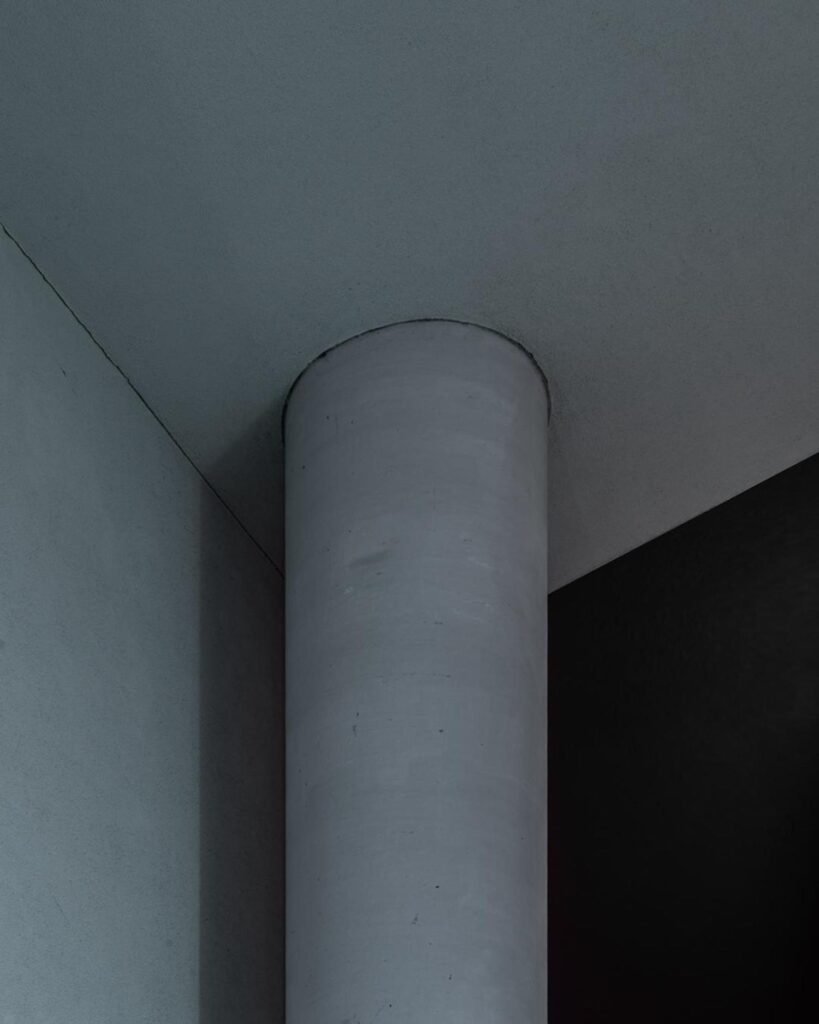Michela Coslovich: Your photography is linked to the concepts of space, architecture and landscape. What do these three fundamental elements mean in your visual search?
Davide Maria Palusa: Spaces, architectures and landscapes are the tools that allow me to represent a concept. For me, they are three main actors of the scene and at the same time scenography, but also reflection and discovery. Through these elements it is possible to extrapolate fragments that allow me to broaden my vision, trying to bring what I see to a wider imagination.
Space is definitely the element I feel closest to: since it is not identifying, it can be filled and thus becomes an experience of observation and action useful for creating new intertwining. This approach is certainly a result of my studies in architecture: the detailed analysis for the return of a new function leads to extreme reading of every single portion of what can become a component to fill architectural space.
The intertwining of architecture and photography took place from my meeting with Stefano Graziani for a Photography exam at university, and thanks to him I understood that photography leaves us the possibility through reality to create new layers for narration, giving the possibility of conceptualization, fundamental for me.
From the series “Tempo proprio”, 2020
MC: Gabriele Basilico in Architectures, Cities, Visions: Reflections on Photography states that “For me, photographing is taking samples of the real world and metabolizing them, as a necessary and nourishing substance for memory, and I am convinced that I have a bulimic relationship with reality”. What is your relationship with the realities that you decide to visually investigate and where does come from the desire to “metabolize” them through photography?
DMP: The research for an objectivity is fundamental for me and reality is part of it. From the latter, however, you can conceptually detach yourself and this is the power of photography: to be able to relate intangible concepts linked to reality.
I am convinced that reality we live in is already very alienating so, by resuming and amplifying the real, we can reach a fantareality of which we are now scared.
It is precisely here that I stop, observing intertwining between environment and architecture, trying to give life to new atmospheres. I consider my photography as a mapping and a conjunction between elements and themes to be treated, photographing automatically means memorizing that transition I am experiencing, not so much in the present but thinking that what I am seeing now I will be able to review in a different way. It is therefore a useful tool for memory to create comparisons and relationships.
From the series “Come Golia”, 2017
MC: How does your creative process develop?
DMP: My creative process always starts from an idea, from a clue. Often, they are projects that do not want to give an answer or affirm, but rather to suggest or contrast. I try to work fluidly thinking that there may not even be a project closure, but I try to branch out an imaginary linked to the starting idea through clues and visual pills.
Having a background in architectural studies, I am closely linked to phases such as analysis and what we could call “inspections”, which in this case become a fundamental moment of research, where notes can become useful pieces for a future story. Photography for me is the possibility of a new discovery and my will is also to get lost in a project (and therefore in a place), always following the red thread initially drawn.
MC: In your project Elogio all’azione silenziosa landscape mixes with movements of air that our eye is able to see only indirectly. How did you manage to capture wind through images?
DMP: The project was born as a request for a group exhibition, starting from the desire to narrate the Bora: a characteristic of the place where I was born and where I live, it is a very strong wind that fills and almost constantly influences our lives. Right from the start, the intention was not to depict the wind in its habitat but to bring it into another space and trying to photograph the invisible. So, I created an artificial wind in the studio, increasing its paradox, power and silence, trying to describe its immateriality through images. My intent was to bring out the characteristic elements of the Bora within a context that is not natural, thus amplifying its impact. I was aware that immortalizing it was an impossible challenge, but my will was precisely to transform something invisible into visible: the result is unreal images that at the same time make us understand power of this wind, that for me it is like home.
From the series “Elogio all’azione silenziosa”, 2020
MC: Also connected to the concept of landscape, Nel bene e nel mare tells the difficulties that exist between territory and society. What amazes you about this contradiction?
DMP: The project came back after a trip to Sicily in which I realized the difficulty that is experienced in these territories. The places I describe are ideally represented as postcards or at least as popular destinations for ‘social’ tourism in a purely didactic way. Not showing or denouncing discomforts of these territories, I wanted to dwell on that moment of separation between reality of the facts and the desire not to think about it, ideally looking for “a happy island” in lightheartedness.
Upon returning from the trip, it was clear to me that the abandonment of all these problems is simply enclosed in that dive that swimmers make without worries, when a few meters further on, something is probably happening. I believe that traveling has become a way of observing man who relates to himself, as if those territories were study-spaces useful for analyzing a flowing society.
MC: Very often your works (La Fede, Approdi) are focused on the analysis of territory in which you live: is this a condition or a necessity for you?
DMP: It is a subject on which I have wondered a lot. If years ago I thought it was an obstacle, now it is a daily challenge that allows me to try to use the place where I live as a stage, as a space to fill or dry. Specifically, I try to intercept fragments for the construction of an imaginary that does not tell a place in detail, but that must capture characteristics that can be useful for a narration of a universal territory. For example, in works cited, territory thus becomes a medium for conceptualizing a project idea, as if it were a clue to the resolution of a much larger case. Being able to decide what to enclose and what to exclude, photography has the great possibility of creating a universal but personal landscape, managing to remove coordinates and boundaries.
MC: Human figure is almost never revealed within your projects, but you are still able to represent it indirectly: how is human condition transmitted within environmental photography?
DMP: Since I am very close to urban landscape, the human figure is always present: is the main actor and anthropized landscape tells a wider action that I often like to relate to natural landscape, in order to amplify the very power of the action. I have worked in this direction on some of my projects, for example “Come Golia” and “Servola”, in which human presence is always represented indirectly through action. In any case, my will is to arrive at an objective landscape portrait, where man is the one who leaves a mark, who makes mistakes and cancels. Photographing the urban landscape is therefore a necessity to intercept these changes, since the passage of time itself is action.
In a more practical way, I almost never insert human figure because I believe it would create a further layer that would already give too many answers, so I try to dry the representation in order to leave an aura of mystery and silence.
MC: On what are you currently working and what is in your future?
DMP: I am currently working on a project focused on the moment of change, transfer, renewal. I am analyzing all the details with which I will have to live in my new home and I am trying to have direct knowledge with these spaces and with these places, creating a mapping and a taxonomy of elements that will be part of my future life. I take home element as a ploy to work on a broader concept, such as the first moment of a new relationship or a new change that fits into everyday life. It thus wants to be a job that seeks to deepen step by step the new identity that we indirectly assume during a moment of change.
In addition to this project, I am carrying out other works trying to identify further insights from which to extrapolate a fragment on which to dwell, keeping photography as a tool for studying and analyzing behavior and transformations.
Davide Maria Palusa (Italy, 1989) is a visual artist who works with photography. Initially concentrated on his studies in Architecture, he later graduated in Photography in Florence and at Spazio Labò in Bologna. He combines photography and architecture by analyzing spaces through a typically design study mode. His research focuses on the representation of space, observing the intertwining between environment and architecture thus giving life to new atmospheres.

